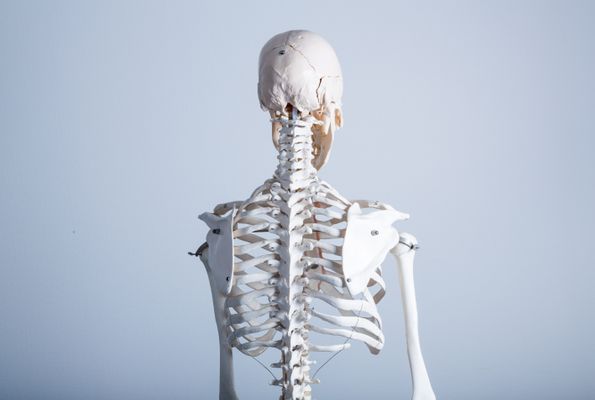4.3.10
Capable & Relating
Ble - Capable
Ble - Capable
Words ending in 'ble' generally mean something is capable of being that way.


Edible
Edible
- If something is edible, it's able to be eaten.
- Example: The soup was past its sell-by date, but it was still edible.
- Alternative: The soup was past its sell-by date, but you could still eat it.


Disposable
Disposable
- If something's disposable, it can be thrown away.
- Example: Do you prefer using disposable razors, or ones with replaceable heads?
- Alternative: Do you prefer using razors you can throw away, or ones with replaceable heads?


Lovable
Lovable
- If something is lovable, it's capable of being loved.
- Example: Shaggy was such a lovable dog.
- Alternative: Shaggy was such a wonderful dog.


Measurable
Measurable
- If something is measurable, you can measure it.
- Example: A pencil is measurable; emotions are not.
- Alternative: A pencil can be measured; emotions cannot.


Excitable
Excitable
- If something is excitable, it gets excited.
- Example: Harold was very excitable around new people.
- Alternative: Harold often got very excited around new people.
Al - Relating To
Al - Relating To
Words ending in 'al' often mean relating to something.


Regional
Regional
- Regional means relating to the region.
- Example: In 2018, Italy held regional elections.
- Alternative: In 2018, Italy held elections for different regions.


Coastal
Coastal
- Coastal means relating to the coast.
- Example: Blackpool is a coastal city.
- Alternative: Blackpool is a city on the coast.


Controversial
Controversial
- Controversial means relating to public disagreement (controversy).
- Example: Roger has made some controversial statements about women in the past.
- Alternative: Roger has made some contestable statements about women in the past.


Skeletal
Skeletal
- Skeletal means relating to a skeleton.
- Example: Suzie was skeletally thin.
- Alternative: Suzie looked like a skeleton she was so thin.


Professional
Professional
- Professional means relating to work (a profession).
- Example: Sammy had three years of professional experience.
- Alternative: Sammy had three years' work experience.


Traditional
Traditional
- Traditional means relating to tradition or an aspect of tradition.
- Example: Ruby was determined not to be a traditional housewife.
- Alternative: Ruby was determined not to be a usual housewife.
1Spelling
1.1Spelling
1.2Prefixes
1.3Suffixes
1.3.1Vowel Suffixes
1.3.2Short Vowel Suffixes
1.3.3Suffixes: '-ous'
1.3.4Rules for Suffixes: '-ous'
1.3.5Rules for Suffixes: '-ous' 2
1.3.6Suffixes: '-ly'
1.3.7Suffixes: '-ation'
1.3.8Suffixes: '-ation' 2
1.3.9Spelling: '-tion' Endings
1.3.10Spelling: '-sion' Endings
1.3.11Spelling: '-ssion' Endings
1.3.12Spelling: '-cian' Endings
1.3.13End of Topic Test - Prefixes & Suffixes
1.4Making Words Plural
1.5Homophones
1.5.1Accept & Except
1.5.2Affect & Effect
1.5.3Ball & Bawl
1.5.4Berry & Bury
1.5.5Brake & Break
1.5.6Fair & Fare
1.5.7Grate & Great
1.5.8Groan & Grown
1.5.9Hear & Here
1.5.10Heal, Heel & He'll
1.5.11Knot & Not
1.5.12Mail & Male
1.5.13Main & Mane
1.5.14Meat & Meet
1.5.15Medal & Meddle
1.5.16Missed & Mist
1.5.17Peace & Piece
1.5.18Plain & Plane
1.5.19Rain & Reign & Rein
1.5.20Scene & Seen
1.5.21Weather & Whether
1.5.22Whose & Who's
1.5.23End of Topic Test - Homophones
1.6Word Meanings
2Punctuation
2.1Punctuation
2.1.1Full Stops
2.1.2Capital Letters
2.1.3Commas
2.1.4Commas 2
2.1.5Using Apostrophes with Regular Plurals
2.1.6Using Apostrophes with Irregular Plurals
2.1.7Question Marks & Exclamation Marks
2.1.8Brackets
2.1.9Dashes
2.1.10Colon
2.1.11Semi-Colon
2.1.12Direct Speech
2.1.13Indirect Speech
2.1.14Hyphens
2.1.15Ellipses
2.1.16End of Topic Test - Punctuation
2.1.17End of Topic Test - Punctuation 2
2.2Writing Structure
3Grammar
3.1Word Classes
3.3Writing Coherently
3.4Verbs
3.5Modal Verbs
3.6Phrasal Verbs
3.7Subjunctive Verbs
3.8Sentences
3.8.1Subject of a Sentence
3.8.2Object of a Sentence
3.8.3Main & Subordinate Clauses
3.8.4Simple Sentences & Compound Sentences
3.8.5Complex Sentences
3.8.6Relative Clauses
3.8.7Relative Clauses Without Relative Pronouns
3.8.8Participle Clauses
3.8.9Run-on Sentences
3.8.10Sentence Functions
3.8.11End of Topic Test - Sentences
3.9Tenses
3.10Adverbials
3.11Language Techniques
4Decoding Words
4.1Common Word Roots
4.2Common Prefixes
4.2.1For & Against
4.2.2End of Topic Test - Common Prefixes 2
4.2.3All & Same
4.2.4Away & Far
4.2.5Colour & Shape
4.2.6End of Topic Test - Common Prefixes
4.2.7Back & Down
4.2.8Numbers
4.2.9Across & Through
4.2.10Life & Earth
4.2.11Empty & Broken
4.2.12Great & Greater
4.2.13Hearing & Speaking
4.2.14Apart & Together
4.2.15Over & Under
4.2.16In
4.2.17Less & Smaller
4.2.18Before & After
5Reading & Writing
5.1Reading Formats
Jump to other topics
1Spelling
1.1Spelling
1.2Prefixes
1.3Suffixes
1.3.1Vowel Suffixes
1.3.2Short Vowel Suffixes
1.3.3Suffixes: '-ous'
1.3.4Rules for Suffixes: '-ous'
1.3.5Rules for Suffixes: '-ous' 2
1.3.6Suffixes: '-ly'
1.3.7Suffixes: '-ation'
1.3.8Suffixes: '-ation' 2
1.3.9Spelling: '-tion' Endings
1.3.10Spelling: '-sion' Endings
1.3.11Spelling: '-ssion' Endings
1.3.12Spelling: '-cian' Endings
1.3.13End of Topic Test - Prefixes & Suffixes
1.4Making Words Plural
1.5Homophones
1.5.1Accept & Except
1.5.2Affect & Effect
1.5.3Ball & Bawl
1.5.4Berry & Bury
1.5.5Brake & Break
1.5.6Fair & Fare
1.5.7Grate & Great
1.5.8Groan & Grown
1.5.9Hear & Here
1.5.10Heal, Heel & He'll
1.5.11Knot & Not
1.5.12Mail & Male
1.5.13Main & Mane
1.5.14Meat & Meet
1.5.15Medal & Meddle
1.5.16Missed & Mist
1.5.17Peace & Piece
1.5.18Plain & Plane
1.5.19Rain & Reign & Rein
1.5.20Scene & Seen
1.5.21Weather & Whether
1.5.22Whose & Who's
1.5.23End of Topic Test - Homophones
1.6Word Meanings
2Punctuation
2.1Punctuation
2.1.1Full Stops
2.1.2Capital Letters
2.1.3Commas
2.1.4Commas 2
2.1.5Using Apostrophes with Regular Plurals
2.1.6Using Apostrophes with Irregular Plurals
2.1.7Question Marks & Exclamation Marks
2.1.8Brackets
2.1.9Dashes
2.1.10Colon
2.1.11Semi-Colon
2.1.12Direct Speech
2.1.13Indirect Speech
2.1.14Hyphens
2.1.15Ellipses
2.1.16End of Topic Test - Punctuation
2.1.17End of Topic Test - Punctuation 2
2.2Writing Structure
3Grammar
3.1Word Classes
3.3Writing Coherently
3.4Verbs
3.5Modal Verbs
3.6Phrasal Verbs
3.7Subjunctive Verbs
3.8Sentences
3.8.1Subject of a Sentence
3.8.2Object of a Sentence
3.8.3Main & Subordinate Clauses
3.8.4Simple Sentences & Compound Sentences
3.8.5Complex Sentences
3.8.6Relative Clauses
3.8.7Relative Clauses Without Relative Pronouns
3.8.8Participle Clauses
3.8.9Run-on Sentences
3.8.10Sentence Functions
3.8.11End of Topic Test - Sentences
3.9Tenses
3.10Adverbials
3.11Language Techniques
4Decoding Words
4.1Common Word Roots
4.2Common Prefixes
4.2.1For & Against
4.2.2End of Topic Test - Common Prefixes 2
4.2.3All & Same
4.2.4Away & Far
4.2.5Colour & Shape
4.2.6End of Topic Test - Common Prefixes
4.2.7Back & Down
4.2.8Numbers
4.2.9Across & Through
4.2.10Life & Earth
4.2.11Empty & Broken
4.2.12Great & Greater
4.2.13Hearing & Speaking
4.2.14Apart & Together
4.2.15Over & Under
4.2.16In
4.2.17Less & Smaller
4.2.18Before & After
5Reading & Writing
5.1Reading Formats
Unlock your full potential with Seneca Premium
Unlimited access to 10,000+ open-ended exam questions
Mini-mock exams based on your study history
Unlock 800+ premium courses & e-books